Adhesives and assembly in plastics.
Adhesives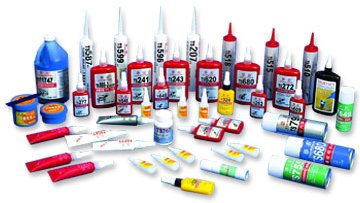
There are many adhesives (glues) available that have been developed over recent years. Some adhesives, such as wood glues, are for specific materials, whilst others, like epoxy resin, will bond dissimilar materials. Adhesives may be rigid or they may be flexible. Some will allow time for repositioning and adjustment whilst others bond instantly on contact. You must check instructions and if you are not certain then try a test join. It is important to select the correct adhesive to suit the application and to ensure that the correct preparation is carried out and that clamping or curing time instructions are followed. Adhesives will not normally bond to greasy, dusty or wet surfaces. Adhesive bonds often fail because the surface has been handled without care and a layer of natural oil from your skin is left deposited on the surface.
Types of Adhesives
| Types of Adhesives | ||
|---|---|---|
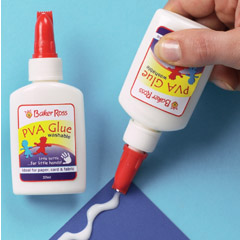 |
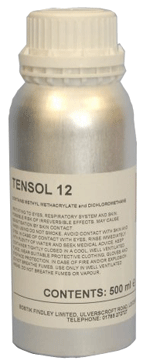 |
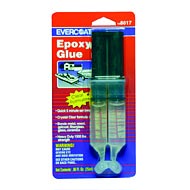 |
PVA glue (polyvinyl acetate) is the most popular wood glue. It is white in colour and comes ready mixed. PVA glue is strong and does not stain; excess glue can be wiped off with a damp cloth. It requires only Iight clamping and sets within 2—3 hours depending upon temperature |
Tensol cements are a range of solvent-based adhesives for joining thermoplastics. It is important to have the correct adhesive — the most popular for acrylic is Tensol 12. The size of the surface gluing area will affect the strength of the joint. | Epoxy resin is a two-part adhesive for unlike materials. It will bond glass, ceramic, wood, metal and hard plastics. Mixing the two parts, resin and hardener, triggers a chemical reaction that begins the setting process. A popular brand is Araldite. |
 |
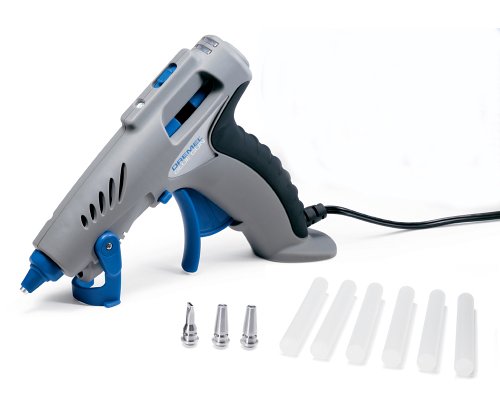 |
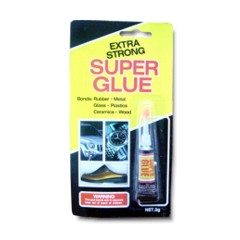 |
| Contact adhesive, such as Evostik, is used for fixing plastic laminates (melamine) and other sheet and strip materials. Surfaces are coated and left until “touch dry” Correct positioning is essential as bonding is immediate | Hot—melt glue comes in glue stick form and is used in conjunction with a glue gun. It is popular for modelling and temporary work. It tends to be messy, is not very strong and gives a poor quality finish. | Super glue is an adhesive that joins plastics very quickly. Great care must be taken because one of its component ( cyanoacrylate ) is a bit dangerous |
How to glue two sheets of plastic using tensol cement.
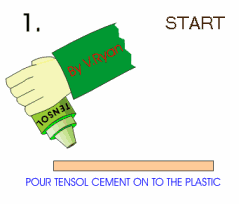
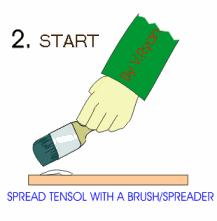
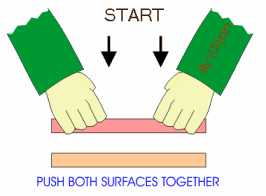
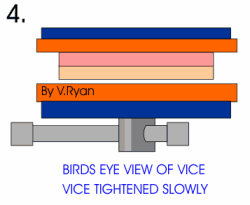
Clamp: Any of various devices used to join, grip, support, or compress mechanical or structural parts.Stain: a discoloration produced by foreign matter having penetrated into or chemically reacted with a material; a spot not easily removed.
Triggers: 1. The lever pressed by the finger to discharge a firearm. 2. A device used to activate a mechanism.
